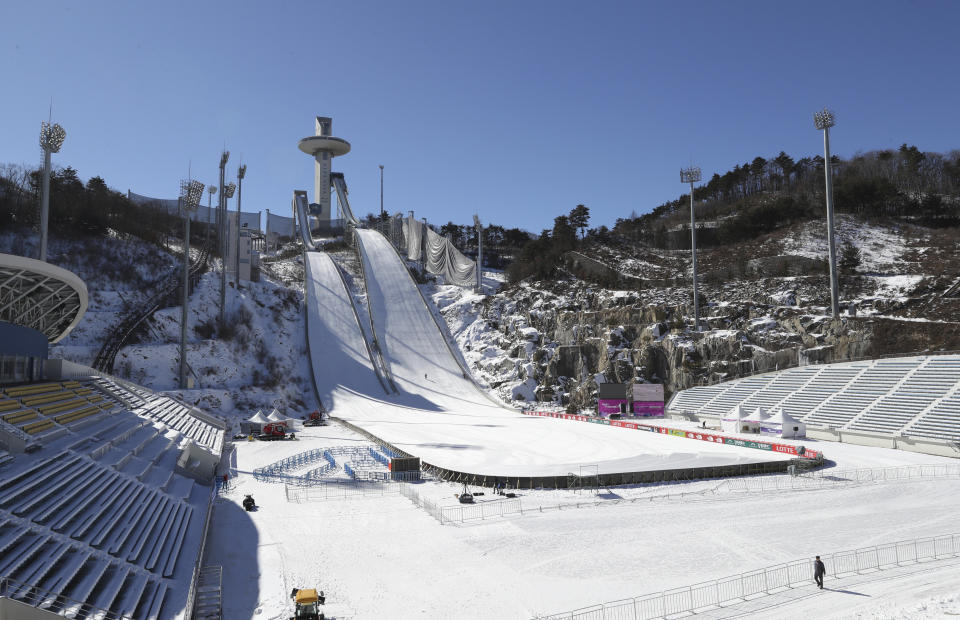PyeongChang's unique ski jump complex doubles as soccer stadium
The Alpensia Ski Jumping Centre in PyeongChang, South Korea is massive.
The normal hill at the complex stands more than 77-meters tall. The large hill is more than 115-meters, or 377 feet tall — taller than the Statue of Liberty in New York City. The course has wowed competitors and fans alike so far at the PyeongChang Games.
“It is indescribable. You feel that there is so much power and pressure involved, it’s a real adrenaline rush to experience,” Norway’s Maren Lundby, who won the women’s normal hill jump on Feb. 12, told the Olympics website. “You feel like you break the law of gravity in a way. If you hit the right angle with the skis, then you just fly out from the hill.”

Yet getting a course built can be tricky. Fortunately for organizers in PyeongChang, they didn’t have to build a new facility for the Olympics, only to have it sit empty following the games.
The Alpensia Ski Jumping Centre was built in 2009, and has held multiple major international events — most recently the FIS Ski Jumping World Cup and Nordic Combined World Cup in 2017. The 13,500-seat venue doubles as a soccer stadium, a part-time home for Gangwon FC. The soccer season in Korea runs almost completely opposite the skiing season, making the idea for a combined complex a no-brainer.
Though it is one of five stadiums that Gangwon FC plays in, it hasn’t become the permanent home for the club that organizers had hoped it would.
Morning Tidbit. Apparently the Olympic ski jumping venue is also a soccer stadium. pic.twitter.com/VZxjZNBto4
— 3rd Degree (@3rdDegreeNet) February 18, 2018
The club has played at five different stadiums since its founding in 2008. It played a handful of games at Alpensia last season before returning to its usual home field in Gangneung. Gangwon played its season opener last season against FC Seoul at Alpensia, bringing more than 5,000 fans to the remote stadium.
While it can be seen as a novelty on first glance to play a match in a ski resort, it hasn’t been sustainable. Getting to the stadium itself is an issue for fans, as many of the 1.5 million people living in the province are spread out in the mountainous region. And, being up in the mountains, having to clear snow and ice from the field can be a constant battle.
So while it is definitely a unique stadium, one that can provide a great backdrop for any club given the opportunity to play there, don’t expect it to become someone’s home stadium anytime soon.
But hey, with the complex’s multiple functions, it likely won’t be turning into a decaying ghost town like many stadiums in Rio de Janeiro following that city’s Summer Olympics.
More Olympics on Yahoo Sports:
• What’s keeping the U.S. afloat in these Olympics? The X Games events
• Wetzel: Shib sibs defy unwritten laws to win ice dance medals
• For some reason, Kirstie Alley would like you to know she hates curling
• Photos: Athletes popped for doping at the PyeongChang Games
• Adelson: Team USA men’s hockey wakes up, reaches quarterfinals


